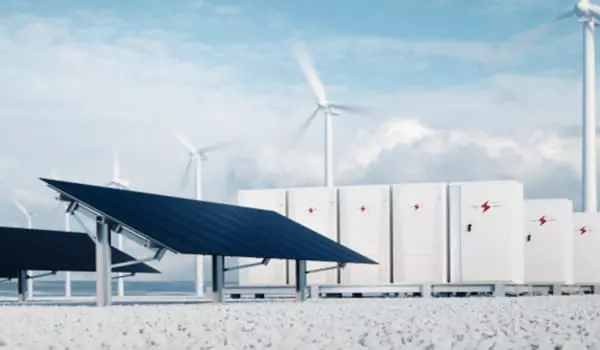Cost-cutting innovations in the electric power sector are underway, and electricity could take the lead over fossil-based combustion fuels in the world’s energy supply by mid-century. A new study finds that when combined with a global carbon price, these developments can catalyze emission reductions to meet the Paris climate targets while reducing the need for controversial negative emissions.
“Today, 80 percent of all energy demands for industry, mobility, or building heating are met directly by burning – mostly fossil – fuels, with only 20 percent met by electricity.” According to Gunnar Luderer, author of the new study and researcher at the Potsdam Institute for Climate Impact Research, as well as professor of Global Energy Systems Analysis at the Technical University of Berlin, “that relationship can be pretty much reversed by 2050, making easy-to-decarbonize electricity the mainstay of global energy supply.” “For the longest time, fossil fuels were inexpensive and widely available, while electricity was a rare and expensive source of energy.” Renewable electricity generation, particularly solar photovoltaics, has become dramatically cheaper, at a rate that most climate models have so far underestimated.
Prices for solar electricity have dropped by 80% in the last decade alone, with further cost reductions expected in the future. This advancement has the potential to fundamentally transform energy systems. “Our computer simulations show that, in combination with global carbon pricing, green electricity can become the cheapest form of energy by 2050, meeting up to three-quarters of total demand,” Luderer explains.
Today, 80 percent of all energy demands for industry, mobility, or building heating are met directly by burning – mostly fossil – fuels, with only 20 percent met by electricity. Our computer simulations show that, in combination with global carbon pricing, green electricity can become the cheapest form of energy by 2050, meeting up to three-quarters of total demand.
Gunnar Luderer
“You can electrify more end-uses than you think”: cars, heating, steel production
The reasons are primarily due to groundbreaking technological advancements in solar and wind power generation, but they are also due to the end uses of electric energy. Solar and wind power costs per kilowatt hour are falling sharply, while battery technology, for example, in automobiles, is rapidly improving. Heat pumps use less energy per unit of heat output than any other type of boiler and are becoming more competitive not only in building applications, but also in industrial applications. “You can electrify more end-uses than you think, and in those cases, you can actually reduce energy consumption compared to current levels,” says Silvia Madeddu, co-author and Potsdam Institute researcher.
“Take steel production: electrifying the melting of recycled steel, also known as secondary steel,” says Madeddu. “This reduces the total process energy required and lowers the carbon intensity per tonne of steel produced.” “Overall, we find that more than half of all industrial energy demand can be electrified by 2050.” However, the researchers point out that some electrification bottlenecks still exist. Long-haul aviation, shipping, and chemical feedstocks, i.e. fossil fuels used as raw materials in chemical production, are the slowest in the race to decarbonisation.

Limiting the reliance on negative emissions
The scale of technological progress provides tremendous opportunities for both countries to leapfrog and investors to profit. However, not every technology has been a success so far. “In this study, we limited our reliance on carbon-capture-and-storage technologies because they have proven to be more difficult to scale than previously anticipated: Carbon Capture and Storage has not seen the same dramatic drop in cost as, say, solar power.
Biomass, in turn, competes for land use with food production “Luderer lays it all out. “Intriguingly, we discovered that accelerating electrification of energy demands can more than compensate for a shortfall in biomass and CCS, while still keeping the 1.5 °C goal within reach and reducing land requirements for energy crops by two-thirds.”
Era of electricity will come — but global climate policy must accelerate it to meet climate goals
“Either way, the era of electricity will arrive. However, only broad regulation of fossil fuels across sectors and world regions – most importantly, some form of carbon pricing – can ensure that 1.5 degrees Celsius is reached in time “According to Luderer. Indeed, the simulations show that even if no climate policy is implemented, electricity’s share will more than double over the course of the century.
However, in order to meet the Paris Agreement’s goal of limiting global warming to well below two degrees Celsius, decisive and global political coordination is required: carbon pricing, the elimination of electricity levies, the expansion of grid infrastructure, and the redesign of electricity markets to reward storage and flexible demands. Hydrogen will be a critical chain link in this case, as it can convert renewable electricity into green fuels for sectors that cannot be directly electrified.
“If these elements come together, the prospects of a renewables-based green energy future look truly electrifying,” says Luderer.














